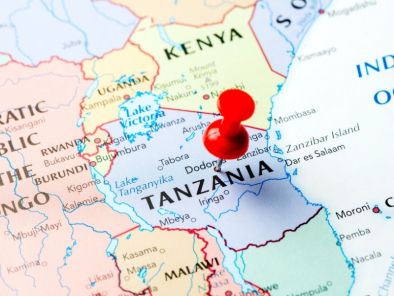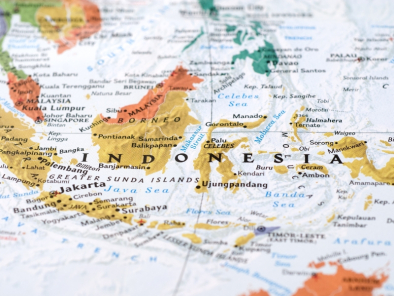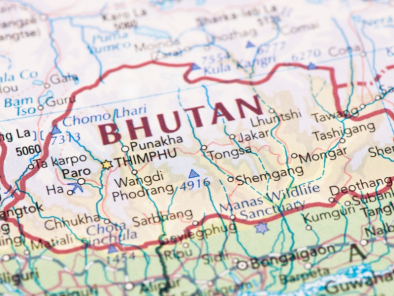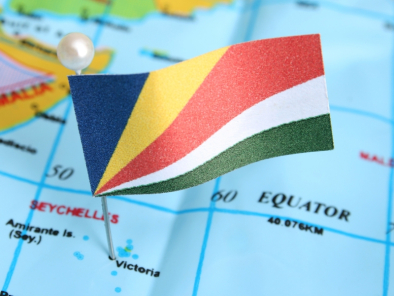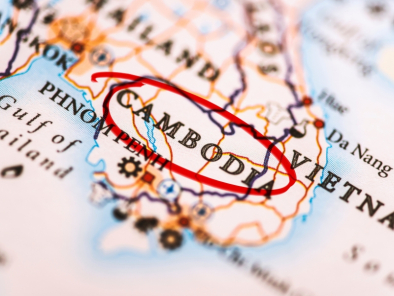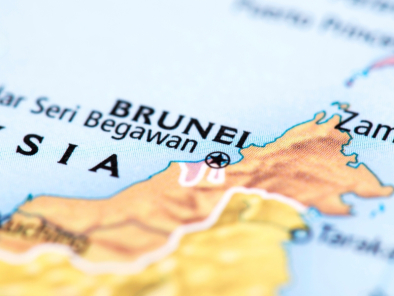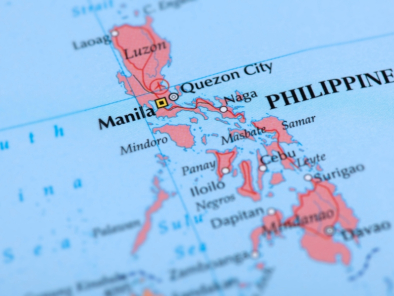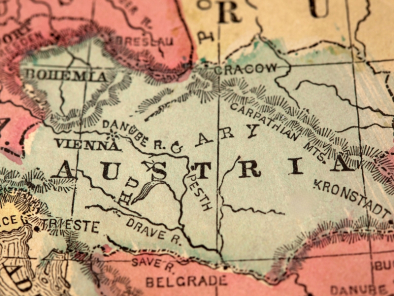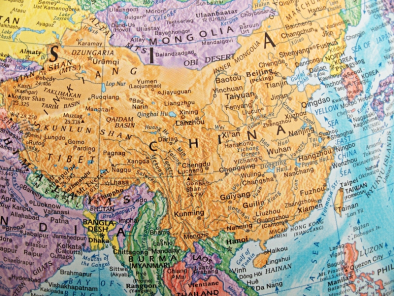TANZANIA
With such a perfect location,
perched on the edge of the African continent, and facing the Indian Ocean, Tanzania’s
weather and climate leaves nothing to be desired. Warm and sunny days are
followed by cool and balmy nights, and whether you are on safari on the Serengeti
plains or enjoying the tropical, the temperatures are always welcoming and
gentle. However, the sun-filled and beautiful days are not all that Tanzania has to
offer. On the contrary, the country’s borders hold a vast number of people and
tribes whose varied cultures and traditions make up the rich tapestry that is Tanzanian culture.
AIRPORTS:
There are 3 International
airports: Dar Es
Salaam (DAR), Kilimanjaro(JRO)
& Zanzibar
(ZNZ).
Dar es
Salaam International (DAR) is 13km (8 miles) southwest of the city (journey
time - 30 minutes).
To/from the airport: A shuttle bus service and
taxi services are available to the city.
Facilities: Outgoing duty-free shop, car
hire, post office, banking and currency exchange facilities, a bar and
restaurants.
Kilimanjaro International
Airport (JRO) is 50km (31 miles) from
Arusha.
To/from the airport: Shuttle bus services and
taxis are available to Arusha from Kilimanjaro. Facilities: Shops, post office, bar and
restaurant.
Zanzibar Airport (ZNZ) is 8km (5 miles) from
Kisauni.
Air India,
Emirates, Kenyan Airways, South African Airways fly into DAR.
GETTING THERE:
By Air: The national
airline is Air Tanzania (TC)
Most
of the safaris in Northern Tanzania start and
finish in Arusha. Kilimanjaro
International Airport
is about 40 miles from Arusha. Arusha is a great deal closer to Nairobi, the capital of Kenya, than it is to Dar-es-Salaam.
The number of airlines and frequency of flights into Nairobi is much greater than those into
Kilimanjaro International, and the prices more competitive.
By Road: Clients do have the option of arranging car transportation from Nairobi to Arusha and
return.
GETTING AROUND:
By Air: By air: Air services have become the most significant form of internal
transport for official and business travel. Small planes, from charter
companies, fly to towns and to bush airstrips.
By Road: Traffic drives
on the left. Tanzania
has a good network of tarmac and all-weather roads connecting all major towns.
Most minor roads are not all weather permitting, becoming impassable to all
except 4-wheel-drive vehicles during the long rains in April and May. It is not
advisable to drive at night because of wild animals, cattle, and goats on the
road. There are often petrol shortages and spare parts for vehicles can be hard
to find.
By Bus: Inexpensive buses connect most places; for example,
there are services from Dar es Salaam
to Arusha, Morogoro and Moshi. Visitors should avoid traveling by bus during
the April/May rains.
LOCAL TIME:
Tanzania is
2.5 hrs behind India.
CURRENCY:
The Tanzanian Shilling is the
local currency, but travelers checks and cash in US$ are recommended. The
current exchange rate is approximately Tsh 850 = US$ 1. It is possible to
change foreign currency at any Bureau de Chance, which generally give better
rates than hotels and most banks.
DAILING Code: 00 255
HEALTH: A valid yellow fever
vaccination certificate is compulsory and must be produced at the airport upon
arrival
CLIMATE:
As Tanzania lies
below the equator, the coolest months occur during the northern hemisphere’s
summer, and all-year round the weather remains pleasant and comfortable.
June to October: temperatures range from around
10°C in the northern highlands to about 23°C on the coast. On the plains and
the lower-altitude game reserves, are warm and mild. On the coast, these months
are some of the most pleasant to visit, with balmy, sunny weather much of the
day and cooling ocean breezes at night.
December to March: the days are hot and sunny with often not a cloud
in the sky. Temperatures range from the mid-twenties to the low thirties
throughout the country while visitors flock to the parks and beaches to escape
the dreariness of late winter in colder climes. Clear sunny days are the norm
in the northern highlands and the heat of mid-day is tempered by the golden
light in late afternoon and the especially striking sunsets. In the game parks
and central plains, the beautiful weather provides perfect opportunities for
unhampered game viewing, and clear night skies offer perfect opportunities for
star-gazing and romantic evenings in the bush.
Mid – March – end of May & November: Tanzania’s
equatorial climate brings two seasons of rain each year: the masika, or long
rains that fall from mid-March to the end of May, and the mvuli, or short
rains, that come intermittently throughout November and parts of December, and
sometimes stretch into early January
CLOTHING:
Tropical clothing is worn throughout the year, but in
the cooler seasons, from June to September, jackets and sweaters may be needed,
especially in the evenings.
Pack lightweight, washable
clothes plus a sweater for early morning game drives, a sunhat, sunglasses, and
sunscreen. Long sleeves and trousers in light-coloured fabrics help discourage
insect bites. Shorts for women are acceptable. Women should carry a wrap to
cover legs in the village and towns as revealing clothes can cause offence.
EVENTS:
Great Migration: The
precise timing of the Wildebeest Migration changes annually and it is a very
unpredictable and spontaneous natural event. The calving season takes place in
the Serengeti between the months of January and mid-March before the Wildebeest Migration
begins heading towards the western Serengeti in June. The best time to see the
migration is usually between June and August when the wildebeest congregate
and prepare to cross the famous Grumeti River.
There are a few excellent camps in the area where you can stay to witness this
natural phenomenon. If you are in the Masai Mara you can expect the wildebeest
to make their arrival as early as July, but they generally arrive between
August and September and remain in the Mara between October and November.
Between December and January the wildebeest gradually begin their migration
back towards the Serengeti.
NATIONAL PARKS:
Tanzania's
national parks extend over some 33,660 sq km (13,000 sq miles). In addition,
there is the unique Ngorongoro Conservation Area, in which wildlife is
protected and where the Masai tribes people also live and herd their cattle.
There are also some 10 game reserves where government-approved hunting safaris
operate under license and about 40 controlled areas where the hunting of game
is controlled by a quota system.
ARUSHA NATIONAL
PARK:
This park lies within the Ngurdoto Crater, a volcano
that has probably been extinct for a quarter of a million years. This
park is divided into 3 Areas. With the exception of the lions you will see all
kinds of wildlife and different species of migratory birds. Visitors are able to see
buffalo, rhino, elephant, giraffe and warthog.
When to visit: It
is fine to visit here the whole year round.
In April and May a 4 Wheel Drive is
essential.
How to get there: From Arusha, a 30 mins drive
takes you to the park, which is on the outskirts of the town.
Do Not Miss:
-the climb to Ngurdoto crater, in
the forest inhabited by the Colubus Monkeys.
-The walk (with a warden) between
Kitoto and the Mount Meru Crater.
-A picnic in one of the
designated sites.
KILIMANJARO NATIONAL
PARK:
At 5895m (19,341ft), above the African plains, the
magnificent solitary peak
of Mt Kilimanjaro is the
dominant feature of this national park, surrounded by a vast protected area.
The lush rainforest on its lower slopes is home to a number of animals
including elephant, buffalo, rhino, monkey, and leopard. The dormant volcano is
remarkable in many ways, not only for its snow-covered peaks and glaciers
rising out of a humid equatorial jungle, but it is the highest freestanding
mountain in the world, a huge cone unattached to a mountain range, and Africa's highest peak. Africa's
highest mountain is a major attraction for mountaineers. Expeditions must be
accompanied by a guide and very warm clothes are required for the last section
of the climb. The ascent takes about three days, allowing for rests at the
three huts and a day or so at the final hut to acclimatize before tackling the
final stage to the summit
There are no known indicators as to who might suffer
from altitude sickness (fitness, age and experience are irrelevant) and the
only cure is an immediate descent to lower altitudes
When to visit: Best
time to visit is December to
February – clearest and warmest conditions during this time. The best time to climb the
mountain is between August and November.
How to get there:
From Arusha, a 2-hrs drive, from Moshi a 40 mins drive.
Do Not Miss:
-your “climbing certificate”.
-A dish of grilled meat and
bananas and a local beer “mbege” or “kilimanjaro” which you will enjoy.
NGORONGORO CONSERVATION AREA:
Rising high above the plains of the Serengeti, this
vast protected area stretches from Lake Natron in the northeast
(the breeding ground for east Africa's flamingoes) to Lake Enaysi in the south and Lake Manyara in the east. The area
includes the still active volcano Ol Doinyo Lengai (Mountain of God), whose last major eruption
was in 1983. The park's centerpiece is the Ngorongoro Crater, a collapsed
volcano forming a crater that is 2000 ft deep, 20km (12.5 miles) in diameter,
covering an area of 311 sq km (122 sq miles). The crater accounts for just
one-tenth of the conservation area, which is home to almost every species of
African plains mammal (except for the impala, topi and giraffe). The
open grassland makes it easy to police, so it is also a stronghold for
endangered species like black rhino and cheetah
It also has the densest population of predators in Africa. The rich birdlife includes flamingoes which are
attracted by the soda content in Lake Magadi on the crater floor
When to visit: It
is fine to visit here the whole year round.
Rains are in April.
How to get there:
From Arusha, a 4-hrs drive or 1 hr charters flight. From Manyara it’s a 2-hr drive.
Do Not Miss:
-A whole day in the crater where
the show never stops.
-Tea time while watching the
sunset above the crater.
SERENGETI NATIONAL
PARK:
Meaning 'endless plains' in the Masai language,
the Serengeti is Tanzania's oldest park and one of the world's best wildlife
refuges, continuous with Kenya's Masai Mara Game Reserve to the north. The open plains
are home to an estimated three million large mammals involved in seasonal
migration, and together with the birds and smaller animals it has the largest
concentration of wildlife in the world. The Serengeti is famous for the Great Migration, the most astounding occurrence in the animal
kingdom that is known to humankind. During this time millions of hoofed
animals, predominantly wildebeest, form one massive herd and leave the dry
plains of Tanzania
in search of greener grazing and water to the north. The season varies
according to the rains, but the best time to witness the northward migration is
usually from the beginning of June and again on their return in mid-November.
This is a plain-dwellers' stronghold of 14,763 sq km
reaching up to the Kenyan border and claimed to be the finest in Africa. Here
are 35 species of plain-dwelling animals, including wildebeest, zebra, gazelle,
cheetah and lion and an extensive selection of birdlife.
When to visit:
for the migration is from Nov to May in the south of the Park and from June to
Oct in the West and to the North.
How to get there:
From Arusha, a 5hrs drive or 1 hr 30 mins charter flight.
Do Not Miss:
-The big cats on the kopjes
(huge granite rocks) which dominate the plains.
- Hundreds of crocodiles in the Grumeti River.
LAKE MANYARA
NATIONAL PARK:
Located on the way to Ngorongoro Crater and the
Serengeti, Lake Manyara National Park
is well worth a stop in its own right. Lake Manyara’s famous tree-climbing lions are
the main reason to pay this park a visit. The only kind of their species in the
world, they make the ancient mahogany and elegant acacias their home during the
rainy season, and are a well-known but rather rare feature of the northern
park. In addition to the lions, the national park is also home to the largest
concentration of baboons anywhere in the world -- a fact that makes for
interesting game viewing of large families of the primates. Wildlife includes lions,
herds of buffalo, elephant, rhino, impala, giraffe, leopard, zebra, bushbuck,
reedbuck, waterbuck and blue and vervet monkeys. Manyara is also noted for its
birdlife, particularly the flamingoes
How to get there: From Arusha, a 3-hrs drive or 1
hr by charter flight.
MIKUMI NATIONAL
PARK:
This park, 1300 sq km in area, offers a chance to see lion, zebra, hippo,
leopard, cheetah, giraffe, impala, wildebeest and warthog. A popular spot for
visitors is the Kikaboga Hippo Pool. Although December to March is the ideal time
for viewing at Mikumi, there are animals throughout the year.
TARANGIRE NATIONAL
PARK:
Only 130km from Arusha and 8km off the Great Cape
to Cairo road,
it is nonetheless an area which compares favorably with the Serengeti in terms
of wildlife density.
RUAHA NATIONAL
PARK:
Tanzania's second-largest and wildest park and the world's largest
elephant sanctuary, Ruaha is located 128km (80 miles) from Iringa in the Southern Highlands along an all-weather road. The park
affords views of unparalleled scenery along the Ruaha Gorge, with many
sightings of antelope. Iringa is also connected with Dar es Salaam and other centers by air and
bus service. The best time to visit is from July to November.
SELOUS GAME RESERVE:
The Selous Game Reserve in southern Tanzania
covers an area larger than Switzerland
(about one-sixth of Tanzania's
land surface), making it one of the biggest in the world, with a massive
elephant population. There is also a high concentration of stalking lions and
other game. UNESCO declared the game reserve a World Heritage Site in 1982.
GOMBE STREAM
NATIONAL PARK:
This park is near Kigoma on the shores of Lake Tanganyika and is the home of about 200
chimpanzees, more easily seen here in their natural habitat than anywhere else
in the world. This is the place where Jane Goodall devoted her life to
recording chimpanzee ethology in a 37-year study.
OTHER NATIONAL PARKS:
These include Katavi, Mahale
Mountains, Rubondo
Island and Udzungura Mountains. There are also marine parks
at Kilwa Reserve, Latham Island Reserve, Rufigi Delta and Tanga
Coral Gardens.
THE COAST:
DAR ES
SALAAM:
Once the capital city, the major port
of Dar es Salaam is the natural
starting point for trips in Tanzania.
It is near the island
of Zanzibar. Parts of Dar es Salaam have a
tranquil air that belies industrial and commercial growth. Further attractions
include the National Museum, housing the skull of Nutcracker Man; Observation Hill, which contains the campus and facilities of the University of Dar es Salaam; and the Village Museum, with exhibits of traditional
housing and crafts.
Excursions
The fishing village
of Msasani, 8km (5 miles) from Dar es Salaam, contains
tombs dating back to the 17th century. Further south, at Kilwa Klsiwani, there are ruins of Portuguese and Arab
architecture. Many beautiful beaches are within easy reach of Dar es Salaam, such as those at Kunduchi, Mbwa Maji and Mjimwena.
-Kunduchi, 24km (15 miles)
north of the city, is a fishing village with nearby ruins of Persian tombs and
mosques.
-Mbudya Island is an uninhabited island
forming part of a protective coral reef which is a good place for diving,
snorkeling and fishing.
-Sinda Island, some 14km (9 miles) off Dar es Salaam, also
offers facilities for snorkeling and shell fishing.
-A 72km drive north of Dar es Salaam is Bagamoyo, a one-time slave port and terminus for the
caravans. This tiny township is the nearest mainland point to Zanzibar and possesses sandy beaches set in a
beautiful bay. Livingstone's body rested in the tiny chapel of the convent here
on its way back to London.
The town mosque and Arab tombs date from the 18th and 19th centuries.
Some 5km (3 miles) to the south is the village of Kaole,
near which are the ruins of a mosque and pillars believed to be 800 years old.
To the north of Bagamoyo, near the Kenyan border, is
the country's second port, Tanga. From here, the visitor can
drive to the beautiful Usambara Mountains and Moshi on the slopes of Mount Kilimanjaro.
ZANZIBAR & MAFIA ISLAND:
Tanzania has 804km (503 miles) of
coastline with superb beaches. Scuba-diving and snorkeling are particularly
good around the islands of Mafia and Zanzibar, which have recently gained a
high reputation amongst divers. Offshore from Zanzibar are several islands ringed with
coral reefs. Both Mafia and Zanzibar
are also renowned for excellent deep sea fishing. There are
numerous resorts and operators offering diving and fishing excursions. The main
fishing season is from September to March. Dolphin safaris and Dhow trips are
also popular, although a law now prohibits tourists from traveling in dhows
from the mainland to Zanzibar.
ZANZIBAR:
The island of Zanzibar, once the metropolis of East Africa, variously ruled by
Shirazi Persians, the Portuguese, the Omani Arabs and British colonials, is
only 20 minutes' flight from Dar es Salaam (ferries are also available).
Otherwise known as the 'Spice
Island', Zanzibar's
golden age was under the Omani Arabs in the early 19th century. By the middle
of the century, it had become the world's largest producer of cloves and the
largest slave-trading post on the African eastern coast. Zanzibar's old Stone Town, a UNESCO World Heritage
Site, is a labyrinth of narrow, winding streets lined with exotic shops,
bazaars, colonial mansions, mosques and squares.
The visitor can still see the house where Dr Livingstone lived, as well as that used by Burton and Speke. The Anglican Cathedral Church of Christ stands on the site of the Old
Slave Market, off Creek Road,
while on the seafront are the palace of the former sultan and the towering Beit-el-Ajaib (The House of Wonders). Zanzibar is a fascinating place with palaces,
forts, stone aqueducts, and baths; its history as a cosmopolitan center of
trade gives it a unique atmosphere. The guided Spice Tours are recommended.
Within the vicinity lie many offshore islands ringed with coral reefs, the most
famous and most visited being Changuu Island
(also known as 'Prison
Island'). There are also many superb
beaches, particularly on the east coast.
Note:
Visitors to Zanzibar
should observe Muslim conventions regarding dress when away from the beach.
MAFIA:
Some 40 minutes'
flight south of Dar es Salaam, the island of Mafia is renowned for big-game fish as
well as being a unique marine park. Powerboats and tackle are available for
hire.
Mafia's Chloe
Bay is part of a
protected marine park, with an unbroken reef running the length of the island.
There are also many secluded beaches
SHOPPING:
The Tourist areas and hotels
sell a wide range of souvenirs, jewelry, and trinkets. Don't be afraid to
bargain at roadside stalls (Your driver/ guide will advise you where to shop
and on a reasonable price). The most popular souvenirs are wooden carvings, curios,
and a famous love stone,
which is the well-known gemstone
"Tanzanite" which is all widely sold at souvenir shops.
What Not to Buy: Please
avoid purchasing wildlife products such as ivory and skins as the market
created by these purchases encourages poaching and terrible injuries to the
animals themselves. Woodcarvings too, should be checked to ensure that the
material comes from a renewable, sustainable source.
FOOD:
Most hotels serve local Tanzanian food while the
major hotels offer Western and other international food.
Table service is normal in restaurants. Bars generally have counter service. Tanzania
is a secular state and alcohol is not prohibited. Zanzibar's population is predominantly
Muslim. Alcohol is available in some tourist hotels and restaurants, but should
not be drunk in public.
National specialties:
• Seafood such as prawns and lobsters.
• Tropical fruit such as coconuts, pawpaws, mangoes, pineapples and bananas.
• A good lager, Safari, is produced locally.
• Konyagi is a popular gin.
• A chocolate and coconut liqueur called Afrikoko.
• A wine called Dodoma, which comes in red or rosé
